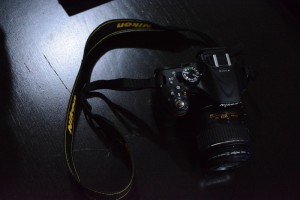Several years ago we used to take pictures only in special circumstances, trying to keep a memory.
However, in the era of smartphones and social networks, taking photos is an everyday phenomenon with amateurs, shooting like maniacs, based more on luck and the quantity of photos, despite of some technical skill, to achieve a satisfactory result.
However, taking a relatively aesthetically good photograph is not impossible, even among amateurs.
Following certain rules and personal experimentation, we can ensure decent shots, without counting to luck.
Let’s see 10 rules we should keep in mind for beautiful photographs…
1. Try vertical shots
Although most people tend to draw horizontal frames, there are some issues that emerge if you turn the camera vertically. For example a staircase that climbs upwards, it would probably worth a vertical drawing. This does not mean that our camera should not have an extra slope to highlight the subject and give a sense of rising.
 2. Mind the background
2. Mind the background
A highly complex background, composed of many elements and different colors, distracts the attention of the subject being photographed, and downgrades it. What we can do is to try to have a simple, monochrome background, without a lot of unnecessary data. We should also be aware of any items that seem to “come” from our central theme (e.g. a person with a pen behind him that seems it “comes” from his head). The way to achieve it is to try different angles of shooting.
3. Get closer to your subject
As we said before, the background is very important for the highlighting or the degradation of our subject. One way to remove unnecessary “noise” is to approach the subject and focus on it. Get closer to your subject so that it fills the frame and press the release button. The result, perhaps, will surprise you!
4. Pay attention to focus
Leaving your background unfocused, you can better highlight the central subject of your photo. This may be difficult to be achieved with the simple digital cameras. One way to “fool” the camera is to find the focus we want (e.g. by approaching the subject) and press the release button halfway. Most cameras will photometer and focus, without taking the picture. So, keeping the release button pressed halfway, we can be removed, to make our frame, and then press the button all the way down to take the picture.
5. Change height
 There are a few cases where the appropriate picture angle is from below. And the only way to do that is to kneel or even sit down! For example, anything that is below eye level, such as children or pets, it’s usually better to fall in their height instead of taking a downward slope picture. Furthermore, the shots from a low level are less trivial, since we are used to see the world from the height we stand. So kneel and discover a “new” world.
There are a few cases where the appropriate picture angle is from below. And the only way to do that is to kneel or even sit down! For example, anything that is below eye level, such as children or pets, it’s usually better to fall in their height instead of taking a downward slope picture. Furthermore, the shots from a low level are less trivial, since we are used to see the world from the height we stand. So kneel and discover a “new” world.
6. Learn the capabilities of your flash
Generally, the flash of ordinary digital cameras for shooting in low light is a solution that rarely can give decent results. So we avoid it and use it only when there is no other solution. But if you need it, then you should know what the limits are. For example, if our subject stands far from the lens, then it will probably come out dark. In a conventional camera, the flash range is about four steps. You can find out the strength of your own if you consult the manual of the camera, or by practical tests performed by you.
On the other hand, when we shoot with flash, we make sure the subject is not too close, as it will come out overexposed.
7. Use the flash even in daylight
When shooting in bright areas outdoors, the use of flash can sometimes highlight better the subject photographed and is in the foreground. A typical example is in photographing faces with a very bright background. In such a case the flash will illuminate shadowed points of the face and will give a more “professional” result.
8. Pay attention to light
The greatest factor for a good photo is light. Light is what is reflected in the camera’s sensor so as the photo to be taken. So before you start shooting, it is good to notice how the light falls. Changing either your position or moving your subject, can ensure better shots.
Especially, in portraits we avoid the direct illumination of the face, as it leads to strong shadows. On the other hand, for landscape photography, the best time of day is early in the morning or in the afternoon, as the light creates long shadows and highlights beautiful colors.
9. Do not place the main subject in the middle of the image – The ‘rule of thirds’
The primary rule in visual composition states that we should not put our subject in the center of the frame! Although most, recklessly, put the object photographed in the middle of the picture, this weakens the composition. The ‘rule of thirds’ tell us that the subject should be placed in specific areas of the frame, away from the center, so that the picture is more balanced and interesting.
Specifically, if you divide the frame with two parallel horizontal lines and two corresponding vertical will take nine equal parts, as shown below. The subject of the photo should be placed near the points with green.
10. Learn how to operate your camera and practice
The last tip for beautiful shots is the continuous training, after learning how the camera works. Knowledge and understanding of the principles of taking photos will take us a step further, allowing us to “play” with the capabilities that better cameras give, such as control of speed and aperture. However, the most important, is the continuous experimentation and testing, dedicating time to the composition of the frame and not just pressing the shutter button…

